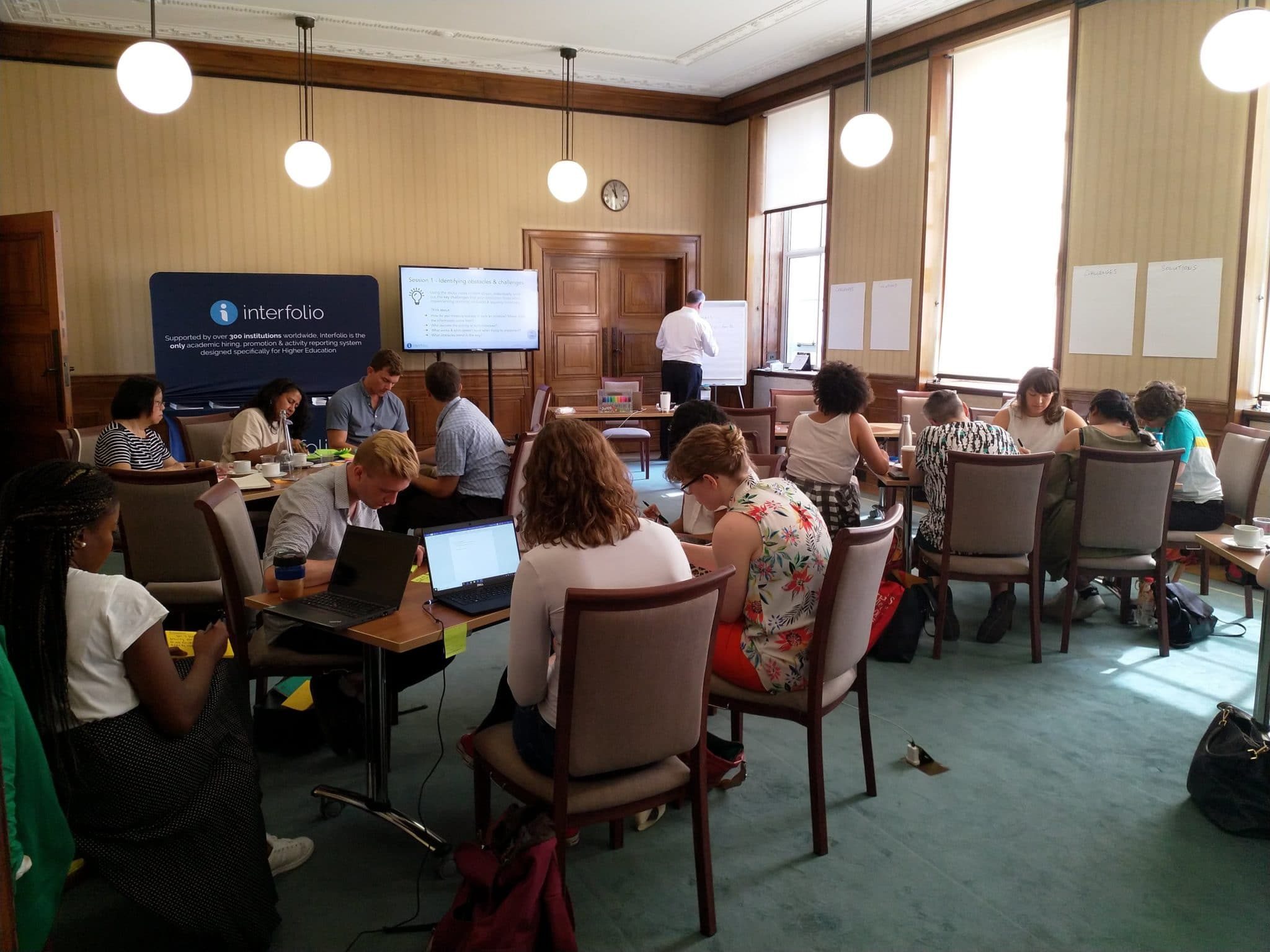We recently partnered with King’s College London to bring together experts in equality, diversity, and inclusion (‘EDI’) to discuss how technology can play a role.
What was the purpose of the workshop?
We gathered 17 inspirational diversity and inclusion advocates from 9 different institutions to hear their challenges and share ideas about how technology might provide solutions to address their own diversity, equality, and inclusion initiatives. It was a passionate group, and a great opportunity to delve deep, explore ideas, and ignite conversations.
We’ve gathered our biggest takeaways, including the three recurring themes that emerged:
Takeaway 1: How do we enable the appropriate level of involvement from executive leadership downwards?
Executive support for driving diversity and inclusion efforts is vital. Does the representation at the top match the representation of the student population? Attracting and retaining university leaders from different backgrounds is imperative, and they should feel empowered to make authoritative decisions that help move EDI initiatives forward.
Executive leadership must demonstrate not only accountability and a strong commitment to EDI but should turn vocal support into action to address the imbalances at all levels of the institution. Leadership should have the proven skills, knowledge, and experience to endorse change and to align diversity and inclusion initiatives with institutional goals. EDI initiatives will thrive only when leadership steps up to own diversity and inclusion, encourage participation institution-wide, and make others aware of the consequences of inaction.
Takeaway 2: How do we ensure that we are starting with an EDI “lens” in the capture and use of data, rather than it being an afterthought?
Measuring success of EDI initiatives appears to be an area where higher education is still finding its way. Data collection is an important component in identifying inequality, initiating activity, and evaluating progress as required to meet legislation. With frequent misunderstandings around data legislations such as GDPR, knowing what to collect and how to be compliant can often be confusing.
Furthermore, equality monitoring can be a sensitive issue for staff and students. Low return rates can also diminish the quality and validity of data. Another issue is the lack of benchmarking data among universities, which makes it difficult to identify areas of underrepresentation or disadvantage. To drive trust in data collection, it’s essential to provide a statement explaining why the institution is collecting the data and the benefits, as well as communicating the positive impacts that quantitative and qualitative data collection produces.
When it comes to looking at technology, there is a historic lack of investment in systems to store crucial EDI data from multiple sources and to display metrics in user-friendly formats. The unreliability of this data means that institutions lack clear key performance indicators (KPIs) and tangible evidence to measure the effectiveness of EDI initiatives.
At many institutions, there is not budget for a full-time data specialist, so it can take weeks to gather and pull the data to measure EDI efforts, by which time the reports may be out of date. The available technologies are often fragmented and and stand-alone, without the ability to integrate with other systems. Data analysis thus becomes a manual and time-consuming process.
Ideally, a technology solution that integrates with the student information and HR systems would help to improve EDI data capture and enable teams to easily create and view reports. Valuable capabilities would include dashboards to understand over- and underrepresented areas and tools to benchmark cultural attitudes over time. With this insight, institutions could assess how the EDI initiatives are affecting overall composition, and develop new strategies if the current are not obtaining the desired results.
Takeaway 3: How do we change the mindset around diversity and inclusion initiatives?
We heard that one of the biggest challenges is the perception that EDI is already being done ‘well enough’. We also discovered that EDI is relatively new as a priority, and as such, there can be resistance, similar to any new initiative and process. Although it may seem that people care about EDI, the amount of action doesn’t always match that enthusiasm. There is also unequal representation of minorities in university leadership resulting in varying levels of commitment to EDI amongst the higher education community and a lack of clarity over roles and responsibilities.
Higher education is often in a state of perpetual change, resulting in “change fatigue” for academic staff members and leaders. There is often an entrenched culture surrounding diversity, which can bring a lack of knowledge, prioritisation, accountability and awareness of these initiatives, as well as active resistance given these initiatives often challenge long-standing norms of the institution. For others, EDI initiatives may not even be on the agenda.
Institutions must ensure that EDI is everyone’s responsibility and make clear why it is important beyond the moral imperative. Leaders must support the transition from the current state to the future state, investigating the issues and gaps, and make EDI a core component of recruitment, not an add-on. Of course, success requires the correct systems, processes, and resources; not only technological or financial investment, but also internal resources (or outside expertise, in some cases) needed to deliver the change. EDI is often reliant on a few people (often volunteers) and good faith, yet it should be embedded in every role, every process, and across faculties, each with KPIs which can be measured.
The workshop provided a valuable opportunity to discuss the challenges facing UK higher education institutions and their EDI initiatives, with the aim to positively impact student success, improve the student and academic experience, and ultimately drive institutional performance.
______________
Interested in learning how The University of Maryland, Baltimore County used Interfolio to track EDI initiatives? Read the report.
Read our research on what’s keeping U.S. based colleges and universities from making real progress on faculty diversity.

